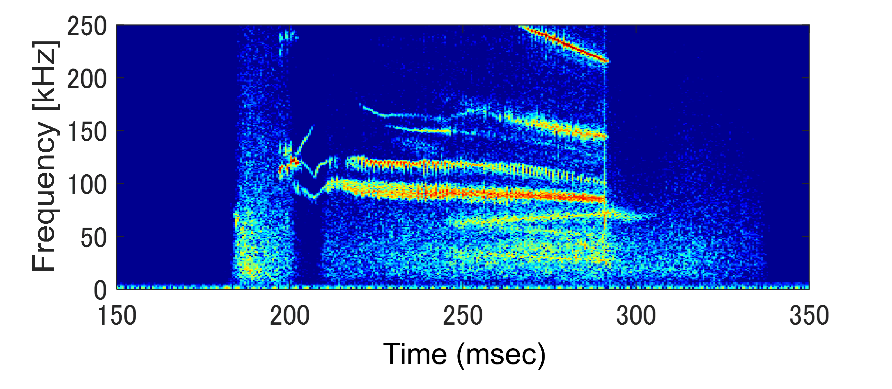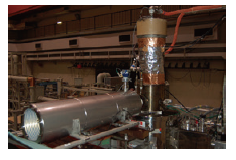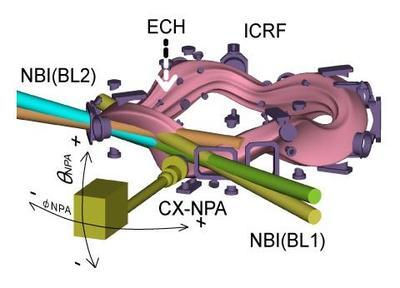Advanced Plasma Energy
Advanced Energy Generation Division Advanced Plasma Energy Research Section
Professor : Kazunobu NAGASAKI
Associate Professor : Shinji KOBAYASHI
Assistant Professor : Shinichiro INAGAKI
High-power microwave systems, high-power neutral beam injection for plasma heating and current drive, and plasma diagnostics using microwaves, beam emission spectroscopy, and X-rays are being developed by controlling charged particles and electromagnetic fields
http://www.iae.kyoto-u.ac.jp/plasma/en/index_E.html
Development of Advanced Energy by electromagnetic waves and particle beams
Advanced and innovative control methods for the collective behavior of charged particles are being developed in this research section to bring enormous contributions to human beings. Emphasized are particularly studies of nonlinear interactions between charged particles and electromagnetic fields. Production, heating, current drive, and MHD suppression of fusion plasmas by electron cyclotron resonance are studied by using high-power microwave sources such as magnetrons and gyrotrons and a neutral beam injection system. The application of microwaves is also targeted for developing heating and current drive systems. A neutral beam injection system based on high-power hydrogen ion sources is used for an attractive scheme for the sustainment of high-density plasmas and an effective active actuator of momentum and plasma current, which enables us to control the plasma transport to a preferable plasma confinement condition. To optimize magnetic configuration in helical devices, we originally designed and constructed an advanced helical device, Heliotron J, at Kyoto University. In the Heliotron J device, we have also been developing plasma diagnostics such as radiometers, reflectometers, and active beam spectroscopic systems (charge-exchange recombination spectroscopy and beam emission spectroscopy) to understand the heat, momentum, and particle transport. Particle and heat transport in magnetically confined plasmas are studied by computational simulation using transport analysis codes based on heat absorption profile calculations.
Neutral beam injection system and active beam spectroscopy for Heliotron J
Two beamlines of the neutral beam injection system have a maximum applied voltage of 30 kV and a maximum injection power of 0.7 MW, respectively. Active beam spectroscopy, charge exchange, and beam emission spectroscopies are being developed to obtain the spatiotemporal structure of density, temperature, and flow velocity and their fluctuations.
Performance improvement of magnetically confined plasmas by control and suppression of instabilities
Based on experimental and numerical studies, we aim to have good plasma confinement utilizing the control and suppression of several kinds of unfavorable instabilities in high-temperature plasmas. In particular, we are interested in the resonant wave-particle interaction, which leads to risky degradation in fusion plasmas and is commonly observed in nature.

High-power microwave source "Gyrotron"
A gyrotron produces a Gaussian-shaped microwave beam of 70 GHz 500 kW power, which is used for the production, heating, and current drive of fusion plasmas.

Analysis of Plasma Structures and MHD Instabilities using X-ray Measurements
We investigate the structure and internal profiles of plasmas by measuring and analyzing X-ray emissions from high-temperature plasmas. Plasma deformation phenomena occur spontaneously due to MHD instabilities, and understanding these mechanisms is crucial for maintaining plasma stability and achieving improved confinement. In particular, we develop a three-dimensional reconstruction method for plasmas using X-ray imaging measurements. By comparing this with 3D equilibrium and analyzing fluctuation structures, we aim to contribute to a better understanding of the physical mechanisms and the establishment of control methods.









